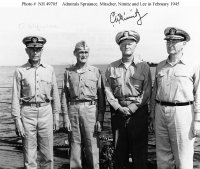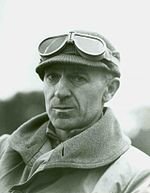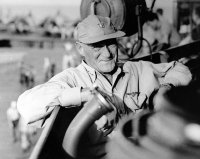OneManGang
Senior Member
- Joined
- Sep 7, 2004
- Messages
- 2,036
- Likes
- 9,669
Tennessee vs The Maxims vs Alabama
Back before the season started the most popular refrain among the Vol Faithful was, “I just want to see some improvement.”
Then came the twin catastrophes of Georgia State and BYU. If anything, Our Beloved Vols seemed to have regressed. The airways were filled with fanboys screaming, “Fahr Pruitt!” “Fahr Fulmer!” “Fahr Smokey!” “Fahr ...” Well, you get the idea. As I've said before, if these clowns held themselves to the same standard they hold coaches and players, East Tennessee would have the largest concentration of millionaires on the planet.
The Third Saturday in October has now come and gone. Once again, the Mighty Integral of the SEC, Alabama football, prevailed over Our Beloved Vols.
However, we long suffering Vol Fans may, just may, be witnessing the rejuvenation of Big Orange football. To this writer it began against Georgia when the Vols came out of the gate on fire but faded right before half. Then came the sixty minute effort versus Mississippi State (University, home of the allustrous Bulldawgs! Grrr!) that gave Our Boys their first SEC win this year.
But Alabama is the yardstick against which all others are measured. One is left with the impression that, minus some costly penalties and bone-headed execution of a few plays, the Vols could have won that one. Cast against that idea though, is the knowledge that the Vols still don't quite know how to win a big game. Alabama does.
And so it goes.
There has been a lot of improvement since Georgia State, but there's still a great deal of work to be done and pain to be endured before one can say that Tennessee is back as a football power.
* * * * * * * * *
On 4 June 1942, at the height of the Battle of Midway, Vice-Admiral Frank Jack Fletcher faced a dilemma. Fletcher was the commander of Task Force 17 centered on the USSYorktown (CV-5) and was also acting commander of the Carrier Striking Force of the U.S. Pacific Fleet. The other part of the Carrier Striking Force was Task Force 16, built around the carriers Enterprise and Hornet, led by Vice-Admiral Raymond Spruance. Fletcher got the nod as overall commander due to the fact that he was the ONLY admiral in the U.S. Navy to have actually fought a carrier battle and that he was senior, by one year, to Spruance.
Fletcher also had earned the Medal of Honor in 1914 during the American incursion into Vera Cruz, Mexico, for his actions in organizing and carrying out the rescue of over 100 civilians during the fighting.
Fletcher had permitted Spruance to launch strikes on the Japanese carrier force as soon as there was confirmed sightings of the four carriers known to comprise the main striking force of the Japanese Navy. By mid-day, three of the Japanese carriers were known to have been either sunk or otherwise put out of action but the fourth survived and sent its planes plus survivors from the other three to find the Americans and exact revenge.
The Japanese spotted Yorktown and hit her with bombs and torpedoes. As she began to list, Fletcher decided to shift his flag to the cruiser Augusta, part of the escort screen. He could have carried on the fight from there, but instead signaled to Spruance, “I will conform to your movements.” This message had two impacts: 1) it started a decline in Fletcher's fortunes which eventually saw him assigned to shore duty within a year for the rest of the war despite having the enviable record of having forces under his command sink six enemy carriers. Set against that was the fact that he had three carriers blown out from underneath him. And, 2) he turned the conduct of the rest of the battle over to a man who was arguably the most capable senior officer in the Pacific.
CINCPAC, (Commander-in-Chief, Pacific Fleet) Admiral Nimitz, had told Spruance before Task Force 16 pulled out of Pearl Harbor on the eve of battle that he actions should be governed, “by the principal of the calculated risk.” If there was one man able to calculate those risks it was Raymond Ames Spruance. After assuming overall command, Sprunce ordered a strike to find the fourth Japanese carrier and sink it. This was done.
As night approached, Spruance ordered his fleet to move east, away from the Japanese. This move was roundly criticized by many who were not there, but proved to be the proper move as, at that time, no American carrier was capable of night operations, his largest surface asset was a couple of cruisers. It was later discovered that had he continued westward he would have run straight into the Main Body of the Japanese fleet which boasted three battleships, a flock of destroyers, and crews that were specifically trained in night tactics.
Raymond Spruance was born in 1886 in Baltimore. His family soon moved to Indianapolis where he spent most of his youth. Spruance earned an appointment to the U.S. Naval Academy and graduated in 1907 ranking 24th out of a class of 209.
He served in a variety of posts on cruisers and battleships up to and during the First World War. The Navy brass coveted the young officer who repeatedly demonstrated his keen intellect and coolness under stress.
One storied incident occurred in 1924 when he was in command of the destroyer USS Osborne which was anchored in the harbor at Bizerte, Lybia. His torpedo officer stormed onto the bridge and breathlessly announced that one of Osborne's depth charges had rolled overboard. Sprunace coolly replied, “Well, pick it up and put it back.”
In 1926 he did a tour as a student at the Naval War College and in subsequent years would return twice to serve as an instructor.
After the attack on Pearl Harbor, Spruance led a cruiser and destroyer force on a variety of escort and bombardment duties. He was named commander of the screen for Taks Force 16 when, two days before sailing, his boss, Admiral Bill Halsey came down with a severe attack of the shingles which restricted him to bed-rest. Halsey immediately recommended Spruance, who had no carrier experience at all, to take his place. He would inherit Halsey's air staff and would rely heavily on them in the coming battle.
After Midway he became CINPAC chief of staff, serving there throughout the balance of 1942 and all of 1943. In February of 1944 he returned to sea as commander of the Fast Carrier Task Force which soon became the Fifth Fleet. By the time of the invasion of Saipan (discussed earlier) the Fifth Fleet was the most powerful fleet in history. Spruance led the Fifth Fleet into the Battle of the Philippine Sea, an American victory so overwhelming that it is known in naval lore as The Great Marianas Turkey Shoot.
Soon after that battle, he turned over command to Halsey while he and his staff returned to Pearl to plan future operations. He and Halsey then switched again after the Battle of Leyte Gulf and he led the fleet through the climactic battle of Okinawa. He stood on the deck of the USS Missouri and observed the Japanese surrender.
After the war, Spruance succeeded Nimitz as CINCPAC. He was subsequently appointed President of the Naval War College.
Spruance was passed over for a fifth star in favor of his old friend Halsey. He never expressed any disappointment and, when asked, would merely say he was happy for his friend and would have been upset if he had gotten the promotion instead of Halsey. He retired from the Navy in 1948 only to be named Ambassador to the Philippines in 1952 by President Truman. He left that post in 1955 and lived quietly with his beloved wife, Margaret, in California. Spruance died on 13 December 1969, a few months after his only son, Capt. Edward Spruance was killed in an automobile accident. He is buried in Golden Gate National Cemetery.
*********
So how did the team do compared to the Maxims?
1. The team that makes the fewest mistakes will win.
It could be said that allowing an SEC crew to officiate the game was a major mistake. But I won't. I won't. … The hell I won't!*
Beyond that, exactly how many brain cells does it take to hand the ball to your 246lb tailback instead of trying to sneak your narrow a** into a hole filled by a Tide defensive tackle after your guard pulled to lead block the called play?
2. Play for and make the breaks. When one comes your way … SCORE!
Tennessee kept it close enough to win – until they didn't.
3. If at first the game – or the breaks – go against you, don’t let up … PUT ON MORE STEAM!
Our Beloved Vols showed resiliency and dare we say pride(?) for the entire game. Frankly, many of us thought they didn't have it in them. They easily could have folded after Maurer went out, but the Vols on both sides of the ball kept fighting and well could have cut the Bammer lead to a single score when … well ...
4. Protect our kickers, our quarterback, our lead and our ballgame.
Pass blocking and run blocking were so much improved that Vol Faithful from Memphis to Mountain City were asking, “Who are those guys?'*
5. Ball! Oskie! Cover, block, cut and slice, pursue and gang tackle … THIS IS THE WINNING EDGE.
This maxim speaks directly to mind-set. Our Boys, despite a few cringe-worthy mental lapses, for the most part did exactly this. the backs ran with abandon and the defense stuffed many a Bama run play.
6. Press the kicking game. Here is where the breaks are made.
Doyle was forced to do some directional punting and when that happens there is a very real probability that the kick will be either hooked or shanked out of bounds which negates the whole goal of keeping the ball away from a dangerous return man.
7. Carry the fight to Alabama and keep it there for sixty minutes.
Overall a very good effort – right up until the last seven minutes.
Next up is Will Muschamp and his poultry flock from the Columbia Chicken Coop.* Tennessee has enough firepower now to walk away from Sattiday's* tilt with another much-needed win – if, and only if – the communication issues between the ears of the Vol' likely starting quarterback can be resolved.
*Extra credit if you get the classical references.
MAXOMG
© 2019 Keeping Your Stories Alive
Suggested Reading:
Thomas Buell, The Quiet Warrior
Samuel Eliot Morison, History of U.S. Naval Operations in World War II (various volumes)
Clark G. Reynolds, The Fast Carriers: The Forging of an Air Navy
The high command: Admirals Spruance, Mitscher, Nimitz and Lee. The best of the best. (US Navy)

Last edited:




